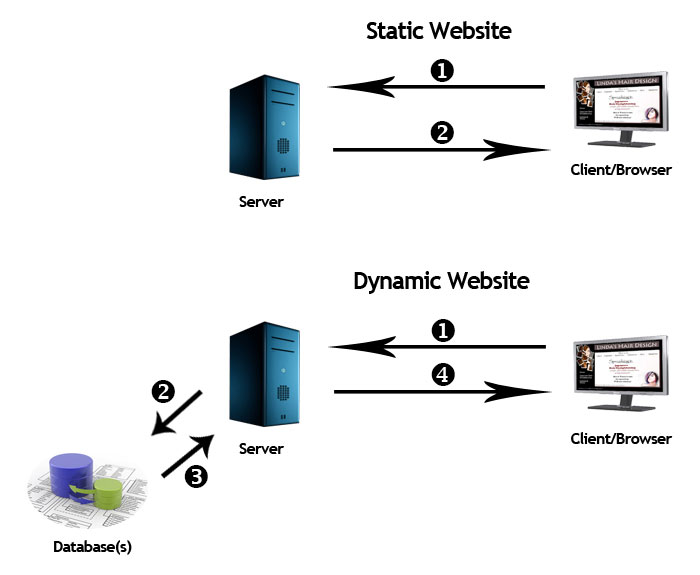Dynamic Web Sites and
Key Terms and Concepts
- Web Client
- Client-side Languages
- Web Server
- Types of Web Sites: Static and Dynamic
- Database Server
- Content Management System
Web Client
A web client is any device that runs a browser and requests information on the web. Today these include
- Computers
- Phones
- Tablets
- Game systems
- Televisions
- Etc.
Phones are now the most common Web clients, but most of the time your phone is using the Internet, not the World Wide Web. Phones only access the Web through browser apps like Safari and Chrome.
Client-side Languages
No matter how they are created, when they get to the client, the vast majority of web pages consist of files written in four languages. The first language communicates directly with the human user. The other three give instructions to the computer that affect how the page looks and acts.
- English [or another natural human language]
- Hypertext Markup Language (HTML)
- Cascading Style Sheets Language (CSS)
- Javascript
Web Server
A web server is simply a computer with a special kind of connection to the Internet. This allows it to send files to clients that ask for them. The computer is given an address, so the clients know where to find it.
Most servers on the Web today are computers that look just like the ones you are sitting in front of. They house files stored in folders, and they can send these files and folders to clients that ask for them. These are known as static web sites, since the files are just sitting there waiting to be requested.
Dynamic Web Sites
The most popular web sites today, however, are a little more complicated. They are called dynamic web sites, since the server processes the files before they send them on to the client.
Clayton State's apps.clayton.edu is an example. When this server gets a request from a client, it first asks for updated information from a separate computer, a database server called Banner.
Sites like Facebook, Amazon, Google, etc., work the same way.
Summary Graphic

Graphic based on an original graphic created by UDeserve Technologies
Content Management Systems (CMS)
Content Management Systems are programs that use server-side languages to make the job of web design easier. We will be using the world's most popular CMS, Wordpress.

CMS structure
On web sites running Content Managment Systems, the server does not immediately respond to the client's request. It first executes commands and often asks other computers for information. It then builds the page dynamically, using this new information, and only then sends it on to the client. The structure of a CMS is illustrated in our textbook on page 151.
